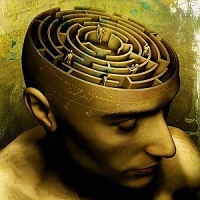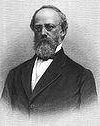The development of the ADD and ADHD label
History of discovery ADHD / ADD
The recognition of ADHD came about in about the 1930s. Doctor Charles Bradley (1902 - 1979) then worked in an institution for difficult-to-handle children with behavioural problems. Before then, it was always thought that this group of children had to be dealt with harshly. Harsh and severe punishments were applied until then. No thought was given to a possibly differently functioning brain.
The 1930s, Charles Bradley's discovery
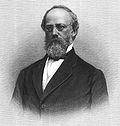
Charles Bradley believed that stimulants might well provide a calming effect in children with inappropriately busy or inattentive behaviour. The name ADHD (Attention Deficit Hyperactivity Disorder) was not then in use. Bradley was ridiculed for a long time because other doctors believed it would only make the problem worse. They thought it would actually make the children even busier.
Bradley thought differently about this, after all, he gave fat people, who wanted to lose weight, stimulants before, and by chance it turned out that in fat children with inappropriate busy behaviour, their busy behaviour calmed down.
When Bradley finally started experimenting with stimulants with his group of children with busy behaviour, the result was what he expected. The children calmed down and appeared to become a lot less chaotic. They were also able to keep their attention on tasks for longer and their concentration improved.
This was a very nice discovery at the time, however, it had to be a long time before the behaviour was actually recognised in such a way that it could be labelled.
The 40s / 50s, Research on ADHD
More and more investigations into the different functioning of the brain. More and more was known and a problem was recognised that was later named ADHD. Basically, you put people in a box to clarify what is going on. That does not mean we can actually speak of a biological disorder of the brain or dysfunction.
The 1960s, The discovery of ADD alongside ADHD
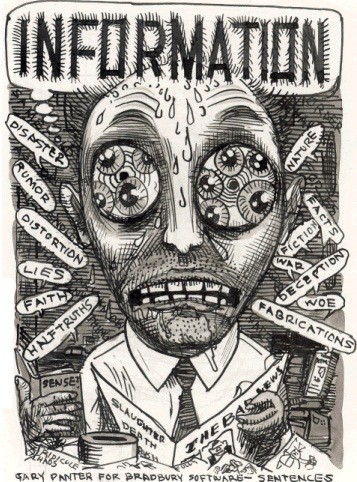 Since the studies were started, a different type of ADHD was slowly discovered. There were found to be people whose brains function in the same different way as they do in ADHD (Attention Deficit Hyperactivity Disorder). The difference was only that there was no hyperactivity in these people. The people were found to mainly suffer from attention deficit and concentration problems and these were therefore ADD symptoms called ADD, without the H of hyperactivity. ADD stands for (Attention Deficit Disorder). In addition, as with ADHD, they suffered from overstimulation, forgetfulness and difficulty processing too much information. In the ADHD form, impulsivity and especially hyperactivity were also found to a more extreme degree.
Since the studies were started, a different type of ADHD was slowly discovered. There were found to be people whose brains function in the same different way as they do in ADHD (Attention Deficit Hyperactivity Disorder). The difference was only that there was no hyperactivity in these people. The people were found to mainly suffer from attention deficit and concentration problems and these were therefore ADD symptoms called ADD, without the H of hyperactivity. ADD stands for (Attention Deficit Disorder). In addition, as with ADHD, they suffered from overstimulation, forgetfulness and difficulty processing too much information. In the ADHD form, impulsivity and especially hyperactivity were also found to a more extreme degree.
70s, ADHD and ADD turns out not to disappear in adulthood
 In the 1970s, it was concluded that ADHD does not progress into adulthood in most cases. ADHD in adults both as ADD in adults occurred. People with the ADHD diagnosis continued to have symptoms later in life. Often, adults with ADHD or ADD do a lot to adapt. This has negative consequences rather than positive effects. In the long run, this often causes additional secondary psychological problems.
In the 1970s, it was concluded that ADHD does not progress into adulthood in most cases. ADHD in adults both as ADD in adults occurred. People with the ADHD diagnosis continued to have symptoms later in life. Often, adults with ADHD or ADD do a lot to adapt. This has negative consequences rather than positive effects. In the long run, this often causes additional secondary psychological problems.
Studies showed that 70% of those diagnosed in adulthood had developed another mental disorder such as anxiety disorder, personality disorder, depression, obsessive-compulsive disorder or something else. Burnout and chronic fatigue are also common.
The 1990s, a breakthrough in ADHD and ADD research
The 1990s saw a major breakthrough in research into ADHD and ADD. PET scans were made and showed that brain activity in the brains of people diagnosed with AD(H)D differed from the "normal" group of people. Later, these findings were supported by many MRI scans.
The genesis of the mass pasting of ADHD and ADD labels
The scans were the great beginning of a negative image regarding ADHD and ADD. There appeared to be a different other brain activity present and this turned out to be hereditary. The ADHD and ADD research ensured that from now on we spoke of a biological disorder. 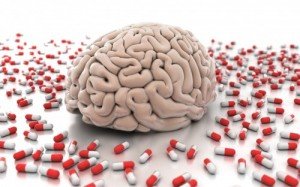 There is different dopamine uptake in the brain and different brain activity. This can be demonstrated and it turns out that stimulant medication helps. The symptoms we experience are muted or, we are dealing with a condition that we can treat. Is this the truth? Possibly not but it is the beginning of the massive sticking of labels around ADD and ADHD and the massive selling and development of new medication. An industry surrounding ADD and ADHD that makes billions has begun.
There is different dopamine uptake in the brain and different brain activity. This can be demonstrated and it turns out that stimulant medication helps. The symptoms we experience are muted or, we are dealing with a condition that we can treat. Is this the truth? Possibly not but it is the beginning of the massive sticking of labels around ADD and ADHD and the massive selling and development of new medication. An industry surrounding ADD and ADHD that makes billions has begun.
Want to read more about the different types of ADHD? Then look here.
Dear ADDs, ADHDs and HSPs,
I am Jochem and have been diagnosed with ADD and am a high-sensitive (HSP). Over the past few years, I have done an enormous amount in the field of self-awareness exercises and self-healing. Partly because in 2011 I suddenly found myself dealing with CFS/ME, or chronic fatigue syndrome, overnight. This was really a big turning point in my life which meant I really had to start working on myself from now on.
To recover, I did have to learn a lot about myself. So I pretty much went to every therapist, coach but also alternative healer you can think of.
During my search for the right help, I gained a lot of valuable knowledge that gave me very good insights and caused me to heal more and more. Now I actually see my ADD more as a strength and can live with it much better.
A book that really opened my eyes is "The Davinci Method" by John Loporto. He approaches all our traits in such a beautiful way. This is really a eye-opener For all people diagnosed with ADD or ADHD. This book was one of the biggest inspirations for me to start this website in late 2011. You can find more about John Loporto's inspiring book here. You can also see his inspiring video there in which he shares his message as an introduction to his book.
I hope this website will inspire you to look at the beautiful and powerful sides of ADD and ADHD, but of course also high sensitivity. Through all the information and tips and advice I give you the tools to be stronger with ADD, ADHD and HSP.
When you feel that spirit in yourself and are confident, you can be a person who can be very inspiring to 'normal' people. A person with a close connection to life, a rich emotional life, full of creativity, a broad thinking mind, a social being, reliable, humorous and with a very good intuition. The roles of feeling different will then reverse. But if you keep getting stuck and often think negatively about yourself, you will become more and more negatively laden and tired and the above beautiful qualities will mostly remain in the background.
On my website, I share with you all the knowledge I have. The knowledge that can give you as an ADD, ADHD and HSP person a positive spin on your life. In doing so, I share all the information I have learned from coaches and therapists and from books, documentaries and interviews.
You can read more about me on the about me page.
Happy reading ADDcharacteristics.net
Greetings, Jochem.
